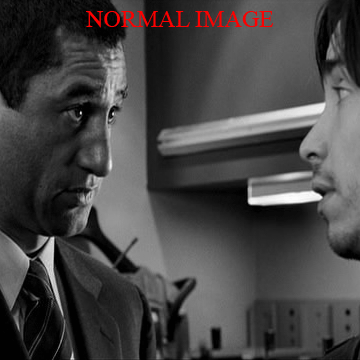
 |
| Blur Detection, Perception, Tolerance, and Adaptation |
 Blurred imagery is a major problem in many forms of visual impairment. Blur occurs because the image on the retina is poorly focused, or because parts of the visual system, such as the retina, have lost ability to transmit fine details about the image. We have been studying various aspects of blur from its detection and perception to blur tolerance and adaptation.
Blurred imagery is a major problem in many forms of visual impairment. Blur occurs because the image on the retina is poorly focused, or because parts of the visual system, such as the retina, have lost ability to transmit fine details about the image. We have been studying various aspects of blur from its detection and perception to blur tolerance and adaptation.
The visual system does possess a limited ability to counteract the effects of blur, by carrying out neural adaptation to blur. Blur adaptation consists of various processes which effectively sharpen imagery, helping to recover some image details that might otherwise have been lost. We have been carrying out studies of how blur adaptation varies across different observers, how it operates in the visual periphery in normal and in patients with central field loss, and how it affects the ability to recognize whether or not an image is actually in focus.
Measuring these effects is relatively simple, and involves having an observer stare continuously at e.g. a blurred video, and periodically replacing the blurred video with another ‘test’ video about which the observer must make a basic decision, depending on the experiment, for example is the test video blurry or sharp? The image above demonstrates one type of effect of blur adaptation: first a normal image is presented, then a blurry image after adapting for a few seconds, the normal image is presented again but it appears sharpened.
Blur tolerance refers to the ability of observers to tolerate a level of blur that is detectable. Since many optical devices, i.e., multifocal lenses, cause blur, the ability of users to tolerate blur may determine their potential to be successful satisfied users of such devices. We have been measuring blur tolerance using a special optical system and have been examining the relation of blur tolerance to other characteristics of observers. In particular we have demonstrated a relationship between blur tolerance and some types of personalities.
Andrew Haun, Ph.D.
Fuensanta Vera Diaz, Ph.D.
NIH Grants EY03790, EY05957, EY12890 and Johnson & Johnson VisionCare, Inc.
Publications
Rodriguez-Lopez V, Barcala X, Zaytoun A, Dorronsoro C, Peli E, Marcos S. (2023) Monovision correction preference and eye dominance measurements, Translational Vision Science & Technology, 12. 18 DOI:10.1167/tvst.12.3.18 [ PDF 1.37MB]
Benedi-Garcia C, Vinas M, Dorronsoro C, Burns SA, Peli E, Marcos S (2019) Vision is protected against blue blur without or with (im)perfect optics. Scientific Reports, 11:352. DOI: 10.1038/s41598-020-79911-w [PDF 3.70MB]
Haun AM, Peli E. (2017) Blur adaptation, phase coherence, and contrast threshold. Submitted, PDF not yet available.
Sayegh RR, Dohlman CH, Greenstein SH, Peli E. (2015) The Boston keratoprosthesis provides a wide depth of focus. Ophthalmic and Physiological Optics; 35: 39–44. doi: 10.1111/opo.12181. [PDF 517KB]
Haun AM, Peli E. (2013) Adaptation to blurred and sharpened video. Journal of Vision, 3(8):12, 1-14, http://www.journalofvision.org/content/13/8/12, doi:10.1167/13.8.12. [PDF 959 KB]

Sawides L, Dorronsoro C, Haun AM, Peli E, Marcos S. (2013) Using pattern classification to measure adaptation to the orientation of high order aberrations. PLoS ONE 8(8): e70856. doi:10.1371/journal.pone.0070856, [PDF 3.00 MB] This paper is available online.
Woods RL, Colvin CR, Vera-Diaz FA, Peli E. (2010) A relationship between tolerance of blur and personality. Investigative Ophthalmology and Visual Science 51 (11): 6077-6082. [PDF 403 KB]
Vera-Diaz FA, Woods RL, Peli E. (2010) Shape and individual variability of the blur adaptation curve. Vision Research 50: 1452-1461. [PDF 640 KB]
Peli E. (2001) Contrast sensitivity function and image discrimination. Journal of the Optical Society of America A 18(2): 283-293. [PDF 1.06 MB]
Peli E, Lang A. (2001) Appearance of images through a multifocal intraocular lens. Journal of the Optical Society of America A 18(2): 302-309. [PDF 765 KB]
Peli E. (1992) Perception and interpretation of high-pass filtered images. Optical Engineering 31(1): 74-81. [PDF 1.10 MB]